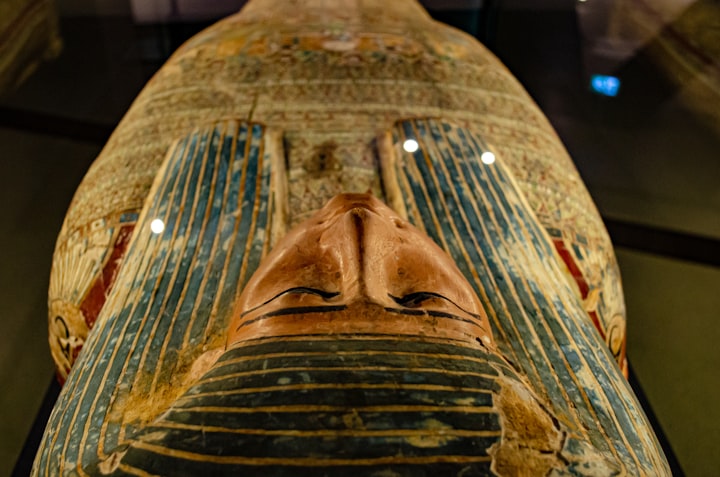
The mask of the Egyptian king Tutankhamun is one of the most famous and recognizable artifacts of ancient Egypt. Made of solid gold and weighing over 20 pounds, the mask is a stunning example of the art and craftsmanship of the ancient Egyptians. In this article, we will explore the history of the mask, its significance, and the controversy surrounding its ownership and display.
The mask of Tutankhamun was discovered in 1922 by the British archaeologist Howard Carter, who had been working in the Valley of the Kings for several years. Carter had been commissioned by Lord Carnarvon, an English aristocrat and amateur Egyptologist, to search for the tomb of Tutankhamun, a relatively obscure pharaoh who had ruled Egypt for only a few years in the 14th century BCE. After several years of searching, Carter finally discovered the tomb of Tutankhamun in November 1922.
The discovery of the tomb was a sensation, and the mask of Tutankhamun quickly became one of the most famous and iconic artifacts of ancient Egypt. The mask is made of solid gold and weighs over 20 pounds. It is adorned with precious stones and is believed to have been designed to protect the mummified body of Tutankhamun and ensure his safe passage into the afterlife. The mask is one of the most stunning examples of the art and craftsmanship of the ancient Egyptians, and has become a symbol of the wealth and power of the pharaohs.
The significance of the mask of Tutankhamun goes beyond its aesthetic beauty. It is also an important historical artifact that provides insight into the beliefs and practices of the ancient Egyptians. The mask is believed to have been made using a technique known as cloisonné, in which thin wires are used to create a pattern on a metal surface, which is then filled with colored glass or enamel. This technique was used extensively by the ancient Egyptians, and the mask of Tutankhamun is one of the finest examples of its use.
The mask is also significant for the inscriptions that are carved into it. These inscriptions provide information about the pharaoh's titles and his relationship with the gods. The inscriptions on the mask also reveal the importance of the god Horus in ancient Egyptian religion. Horus was the son of Osiris and Isis, and was believed to be the god of the sky and protector of the pharaohs. The mask of Tutankhamun is adorned with the image of Horus, and the inscriptions on the mask make it clear that Tutankhamun saw himself as a divine figure, protected by the god Horus.
Despite the significance of the mask of Tutankhamun, there has been controversy surrounding its ownership and display. In 2010, the Egyptian government requested that the mask be returned to Egypt, arguing that it had been stolen from the country and should be considered the property of the Egyptian people. The request was denied by the German museum that currently houses the mask, which argued that it had acquired the mask legally in 1955.
The dispute over the ownership of the mask highlights the ongoing debate over the repatriation of cultural artifacts. Many countries argue that artifacts that were taken from them during colonial times should be returned, while museums and collectors argue that they have a right to own and display these artifacts, and that returning them would set a dangerous precedent. The case of the mask of Tutankhamun is just one example of this debate, which has become increasingly contentious in recent years.
Tutankhamun’s golden mask is one of the most iconic artifacts of ancient Egypt. It is believed to be the death mask of the young pharaoh, who ruled Egypt from 1332 BC to 1323 BC. The mask was discovered in 1922 by the British archaeologist Howard Carter in the Valley of the Kings, and it has since become a symbol of the wealth and power of the pharaohs of ancient Egypt. In this article, we will explore the history, symbolism, and significance of Tutankhamun’s golden mask.
History of Tutankhamun’s Golden Mask
Tutankhamun’s golden mask was discovered by Howard Carter in the burial chamber of the young pharaoh in 1922. The mask is made of solid gold and weighs about 22 pounds. It is 54 centimeters tall and depicts the face of the pharaoh, with eyes made of obsidian, a black volcanic glass. The mask is adorned with precious stones, including lapis lazuli, turquoise, and carnelian. The beard of the mask is made of gold and lapis lazuli, and the headdress is decorated with a cobra and vulture, symbols of the pharaoh’s power and protection.
The mask was placed over the head of the mummy of Tutankhamun, as was customary for the pharaohs of ancient Egypt. The mask was intended to ensure the pharaoh’s protection in the afterlife and to help him to be recognized by the gods in the afterlife. The mask was also believed to be imbued with magical powers, and it was thought to be able to protect the pharaoh’s spirit from harm.
Symbolism of Tutankhamun’s Golden Mask
The golden mask of Tutankhamun is rich in symbolism, reflecting the beliefs and values of ancient Egyptian society. The mask depicts the young pharaoh with a serene expression, conveying the idea of eternal youth and beauty. The use of gold, precious stones, and other materials in the mask is a testament to the wealth and power of the pharaohs of ancient Egypt. The obsidian eyes of the mask were believed to symbolize the eyes of the god Horus, who was associated with the sun and the sky. The cobra and vulture on the headdress were symbols of protection and power, reflecting the pharaoh’s role as a divine ruler.
The beard of the mask was also imbued with symbolism. The pharaohs of ancient Egypt were often depicted with beards, which were seen as a sign of their divinity. The beard of Tutankhamun’s mask was made of gold and lapis lazuli, and it was meant to symbolize the pharaoh’s power and wisdom.
Significance of Tutankhamun’s Golden Mask
Tutankhamun’s golden mask is significant for several reasons. First and foremost, it is a stunning work of art that showcases the skills and craftsmanship of the ancient Egyptians. The use of precious materials such as gold, lapis lazuli, and obsidian reflects the high level of wealth and sophistication of ancient Egyptian society. The mask is also significant as a symbol of the power and divinity of the pharaohs of ancient Egypt. The use of the mask in the burial ceremony was meant to ensure the protection and recognition of the pharaoh in the afterlife.
Tutankhamun’s golden mask has also played a significant role in shaping our understanding of ancient Egypt. The discovery of the mask in 1922 by Howard Carter was a momentous event that captured the world’s attention. The mask, along with the other artifacts discovered in Tutankhamun’s tomb, provided a wealth of information about the customs, beliefs, and practices of ancient Egyptian society
About the Creator
semsem
Blogger and a writer of free verse






Comments
There are no comments for this story
Be the first to respond and start the conversation.